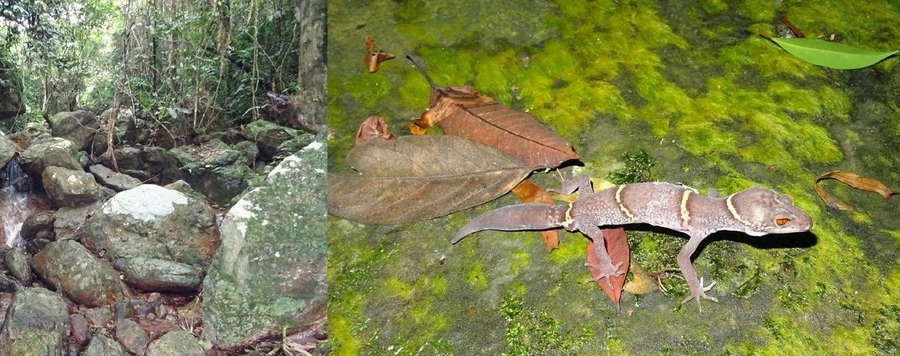
First ecological assessment of the endangered Lichtenfelder’s Tiger Gecko (Goniurosaurus lichtenfelderi) from northern Vietnam
The Lichtenfelder’s Tiger Gecko, Goniurosaurus lichtenfelderi is currently known only from northern Vietnam and southern China. Because of its restricted distribution, the species is potentially threatened by extinction due to anthropogenic impacts. Recently, the species has been listed in the IUCN Red List of Threatened Species as “Vulnerable” and included in CITES Appendix II and the Vietnam Governmental Decree – Group IIB. However, conservation activities to safeguard wild populations of G. lichtenfelderi have not yet been implemented due to a lack of detailed information about the population status and its ecological requirements. In this study, the micro-habitat use of G. lichtenfelderi was assessed. As a result ofour field surveys, we found this species in evergreen forest areas with a high percentage of vegetation coverage and in close proximity to medium or small stream sections with rocky shelters on granitic formations. Canopy coverage, three microclimatic variables (air, substrate temperature and humidity), weather condition and substrate type were the most important characteristics explaining the variation in the micro-habitat use of G. lichtenfelderi. Coupled with a macro-ecological (climate niche) approach, the complex niches of G. lichtenfelderi were defined by comparing them between two geographically distant populations in island and mainland sites. We found high similarities in macro-climatic and micro-habitat niches between the island and mainland populations of G. lichtenfelderi. Based on the ecological information, we recommend conservation actions to protect the core refugia of G. lichtenfelderi and reduce negative influences of anthropogenic impacts on wild populations in the future.






